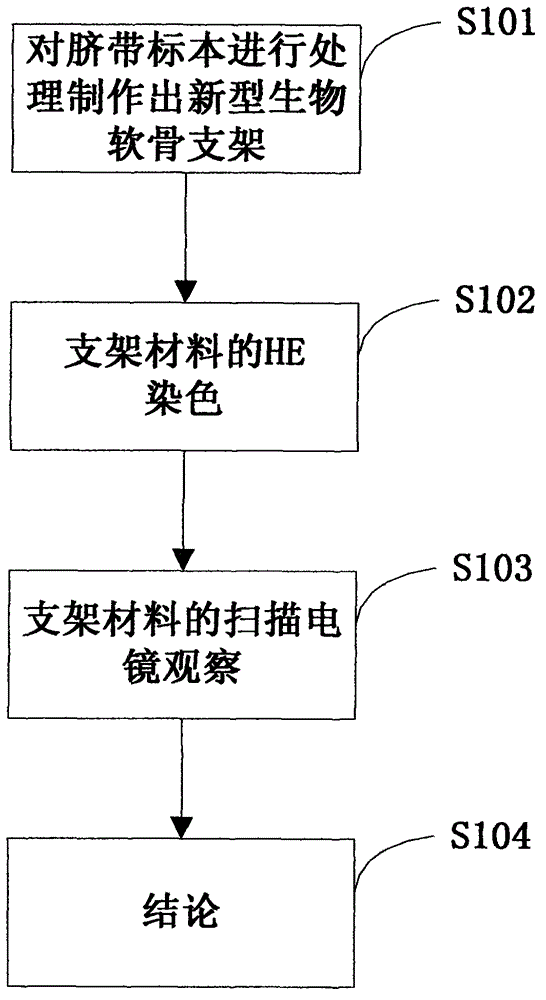Method for manufacturing novel biological cartilage support by using umbilical cord Wharton jelly
A technology of Wharton glue and umbilical cord is applied in the field of making new biological cartilage scaffolds, which can solve the problems of limited sources, damage, and difficulty in solving the rejection of allogeneic tissue, and achieve the effect of uniform pore distribution.
- Summary
- Abstract
- Description
- Claims
- Application Information
AI Technical Summary
Problems solved by technology
Method used
Image
Examples
Embodiment Construction
[0027] In order to make the object, technical solution and advantages of the present invention clearer, the present invention will be further described in detail below in conjunction with the accompanying drawings and embodiments. It should be understood that the specific embodiments described here are only used to explain the present invention, not to limit the present invention.
[0028] figure 1 Shown is a flow chart of making a novel biological cartilage scaffold with umbilical cord Wharton's jelly provided by an embodiment of the present invention. The method includes:
[0029] S101: Processing the umbilical cord specimen to produce a new type of biological cartilage scaffold. (1) After the umbilical cord is removed, rinse repeatedly with phosphate buffered saline (PBS solution) to remove the umbilical cord blood from the surface of the umbilical cord and the umbilical vessels, carefully separate the umbilical vessels and the adventitia of the umbilical cord with surgic...
PUM
 Login to View More
Login to View More Abstract
Description
Claims
Application Information
 Login to View More
Login to View More - R&D
- Intellectual Property
- Life Sciences
- Materials
- Tech Scout
- Unparalleled Data Quality
- Higher Quality Content
- 60% Fewer Hallucinations
Browse by: Latest US Patents, China's latest patents, Technical Efficacy Thesaurus, Application Domain, Technology Topic, Popular Technical Reports.
© 2025 PatSnap. All rights reserved.Legal|Privacy policy|Modern Slavery Act Transparency Statement|Sitemap|About US| Contact US: help@patsnap.com

